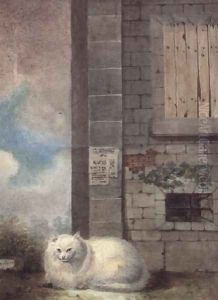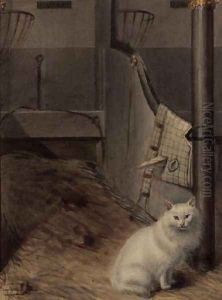Lady Charlotte Schreiber Paintings
Lady Charlotte Schreiber, born Charlotte Elizabeth Bertie, was a notable British artist, collector, and translator in the 19th century. Born on May 19, 1812, into the aristocratic Bertie family, she was deeply immersed in the cultural and intellectual pursuits from a young age. Her marriage to John Josiah Guest, a wealthy industrialist and Member of Parliament, in 1833, opened further avenues for her interests in arts and literature, as they became prominent figures in British society. After Guest's death in 1852, Charlotte married Charles Schreiber, a younger Cambridge academic and politician, in 1855, and henceforth was known as Lady Charlotte Schreiber.
Lady Charlotte Schreiber was not only involved in the arts as a creator but also as an avid collector, particularly known for her extensive collections of porcelain and fans, which were among the finest in Britain. Her interests were not limited to English pieces; she collected items from across Europe and Asia, demonstrating a global appreciation for craftsmanship and design. Her collections were meticulously documented and later bequeathed to the Victoria and Albert Museum in London, making a significant contribution to the public's understanding and appreciation of decorative arts.
Beyond her work as a collector, Lady Charlotte was also a skilled linguist and translator. She translated several works from Welsh and Portuguese into English, contributing to the cultural exchange and literary appreciation between these cultures. Despite the societal expectations of women in her era, Lady Charlotte Schreiber carved out a space for herself as a scholar and collector, leaving a lasting legacy in the fields of art and literature.
Lady Charlotte Schreiber's life was a reflection of her passion for art, culture, and knowledge. Her contributions were recognized in her time, and she was a respected figure in the intellectual and artistic communities of Victorian Britain. She passed away on January 15, 1895, but her collections and translations continue to inspire and influence enthusiasts and scholars in the fields of arts, literature, and history.

